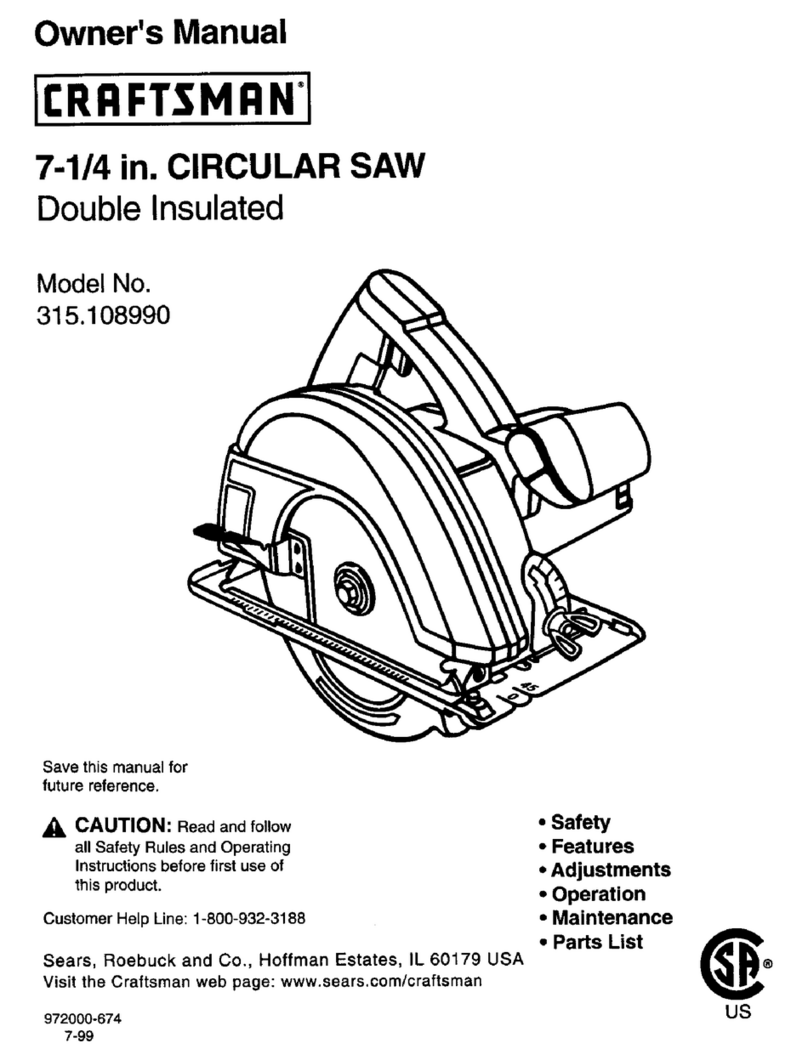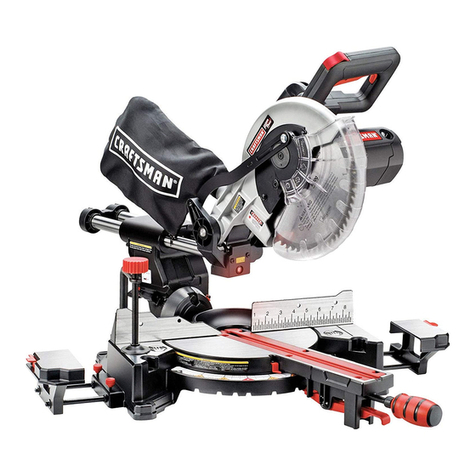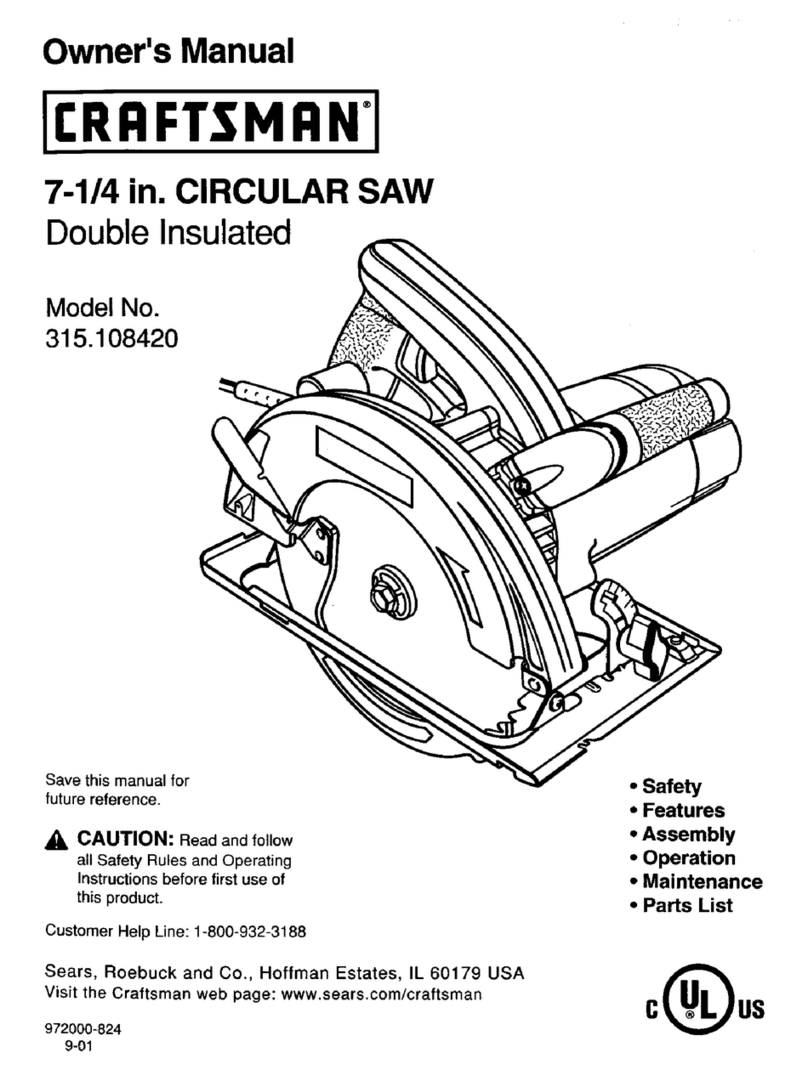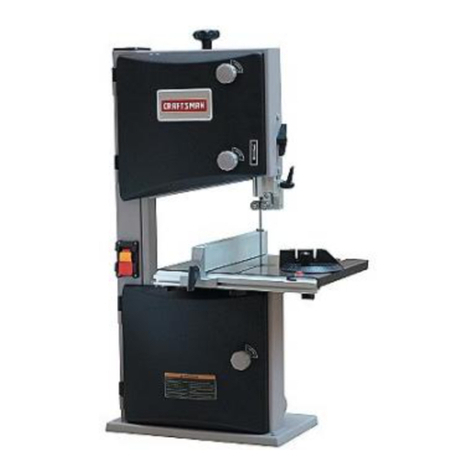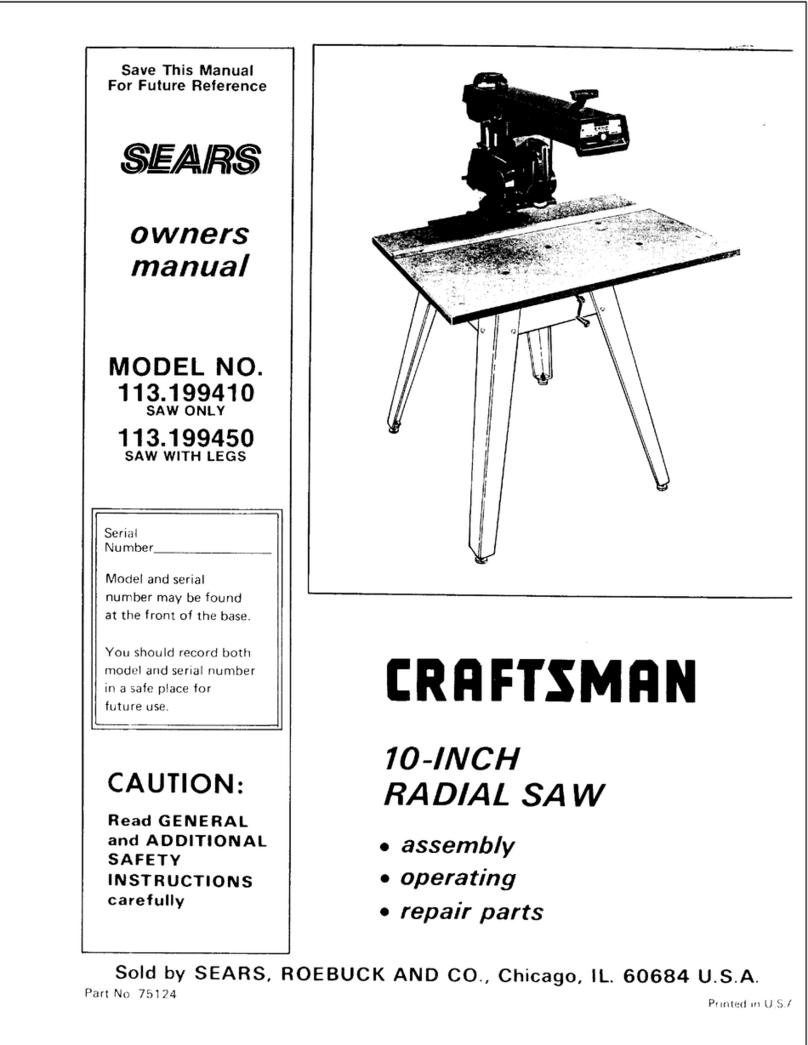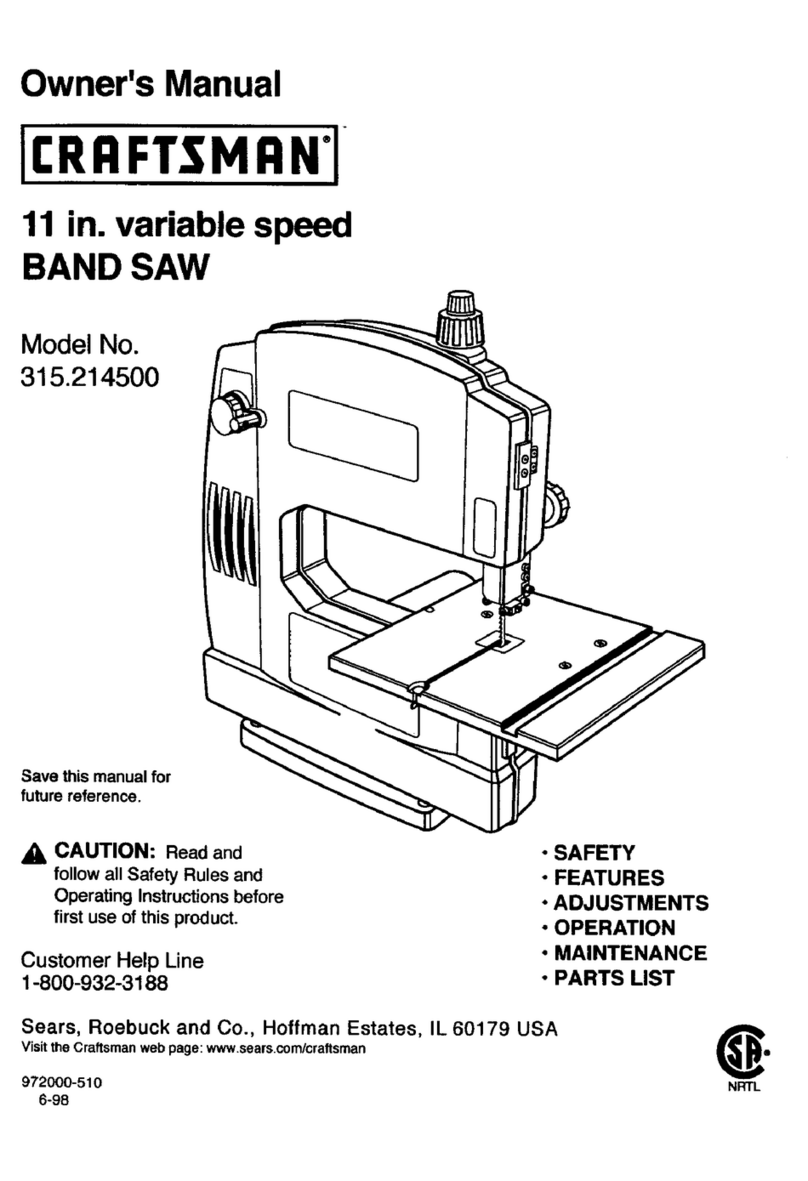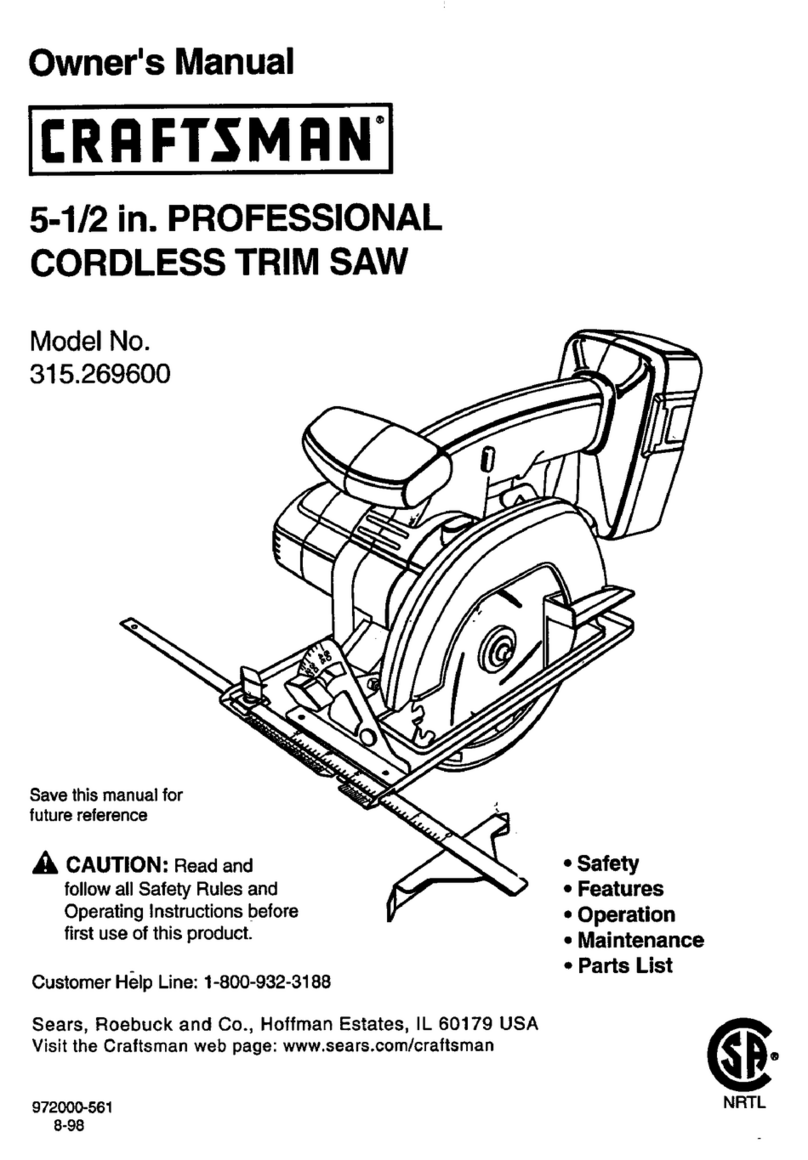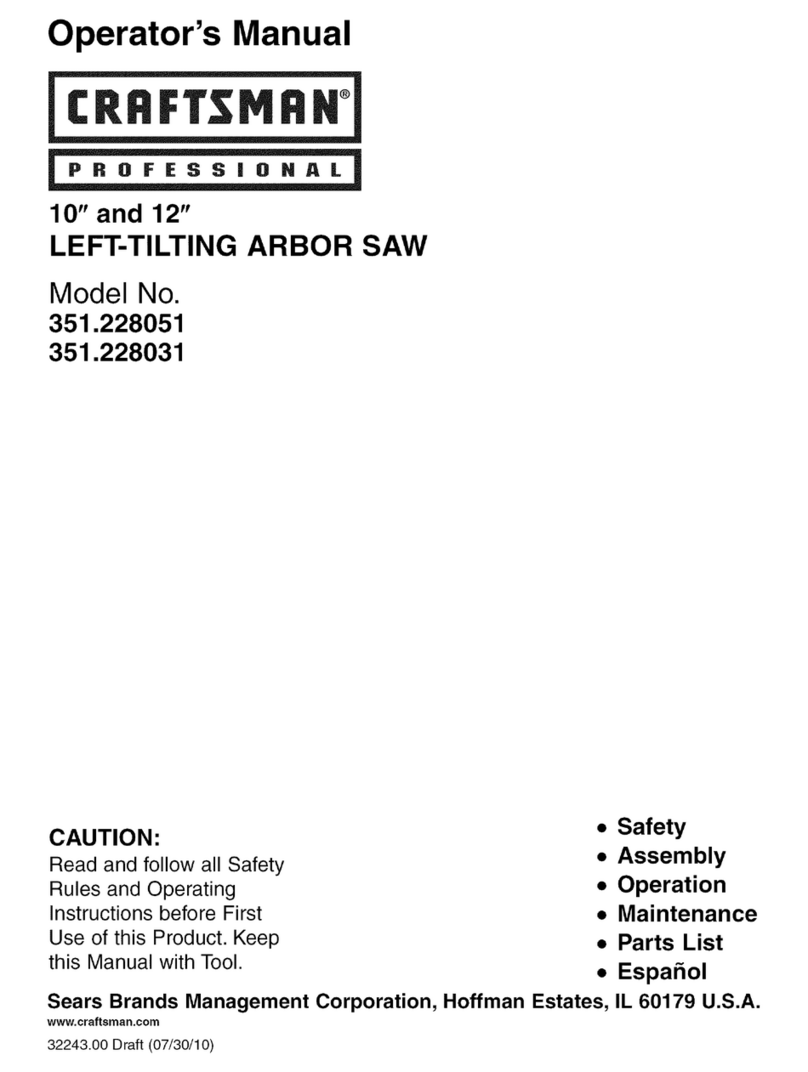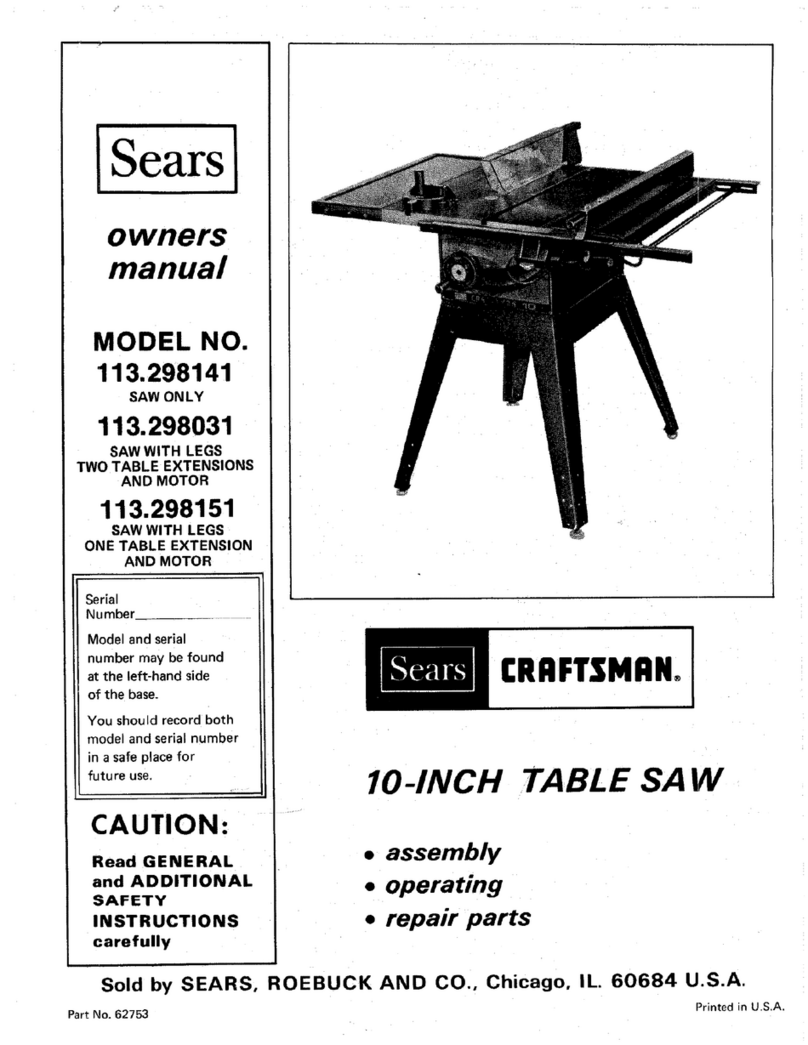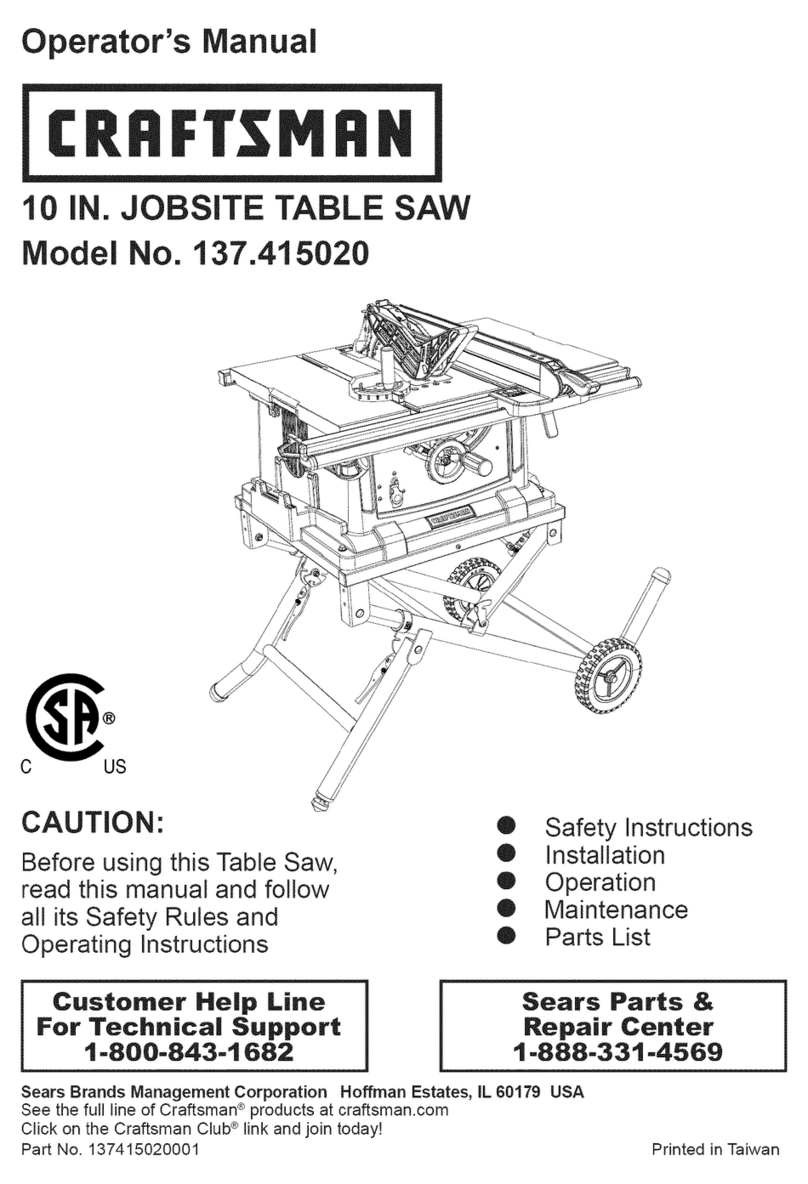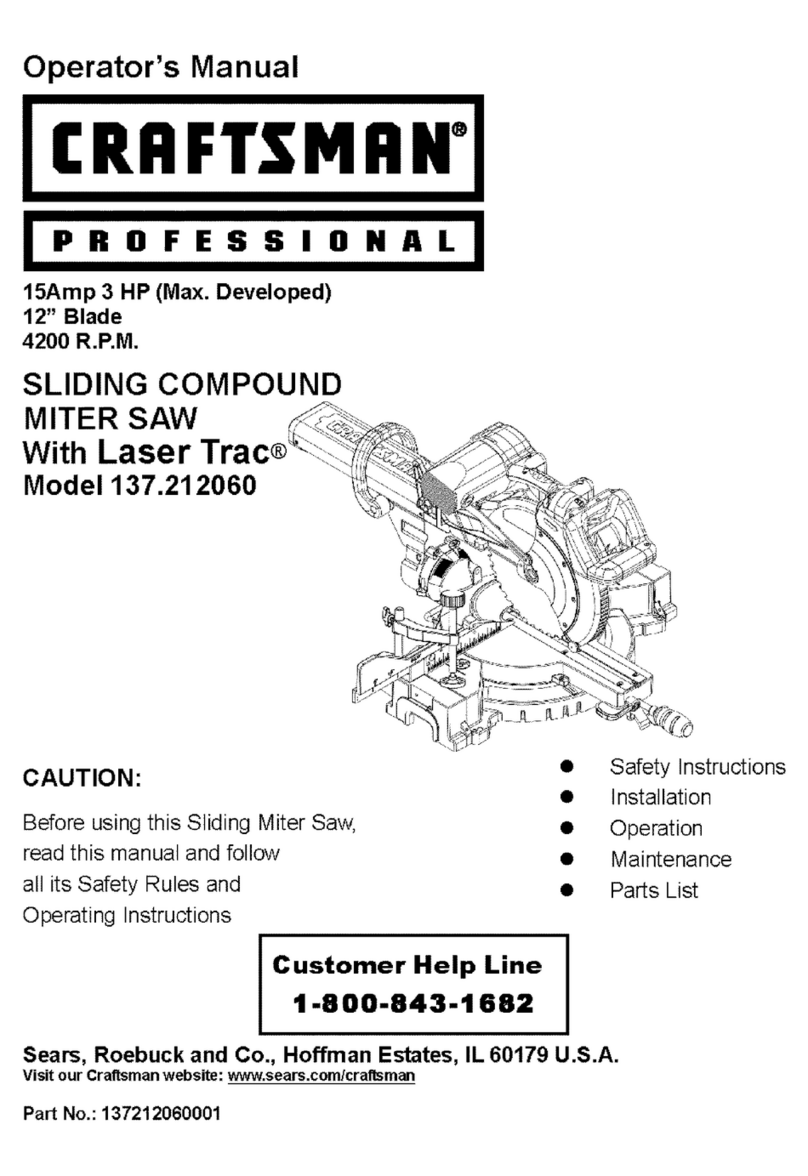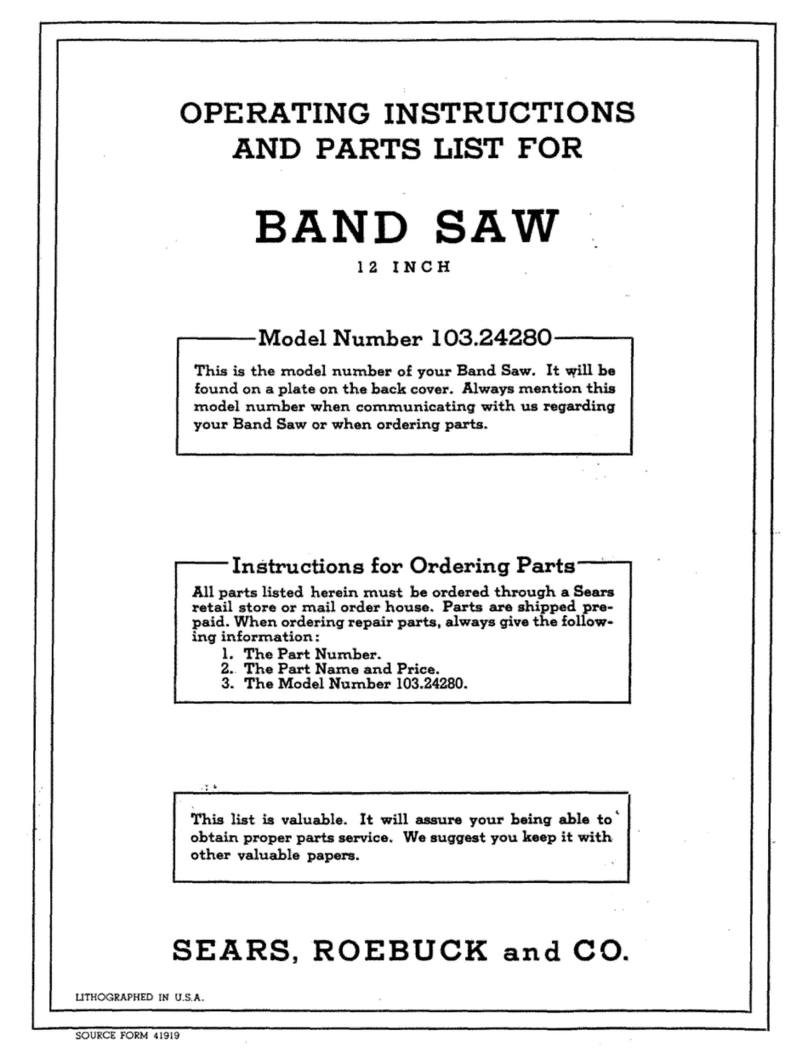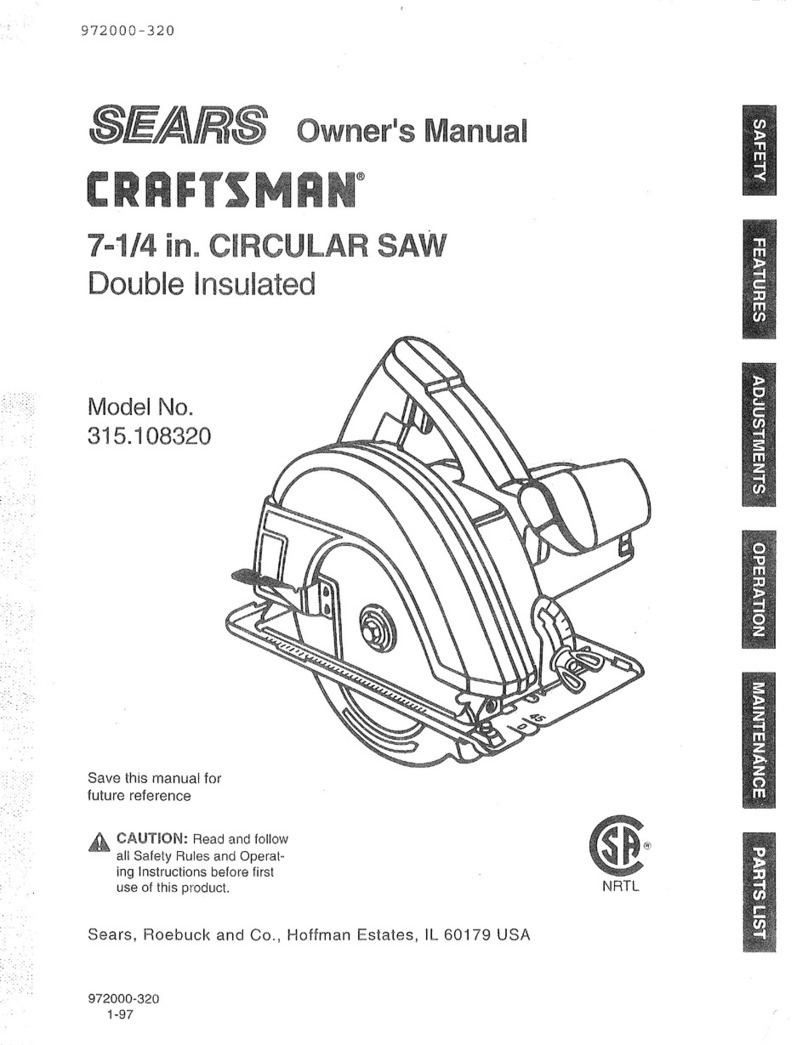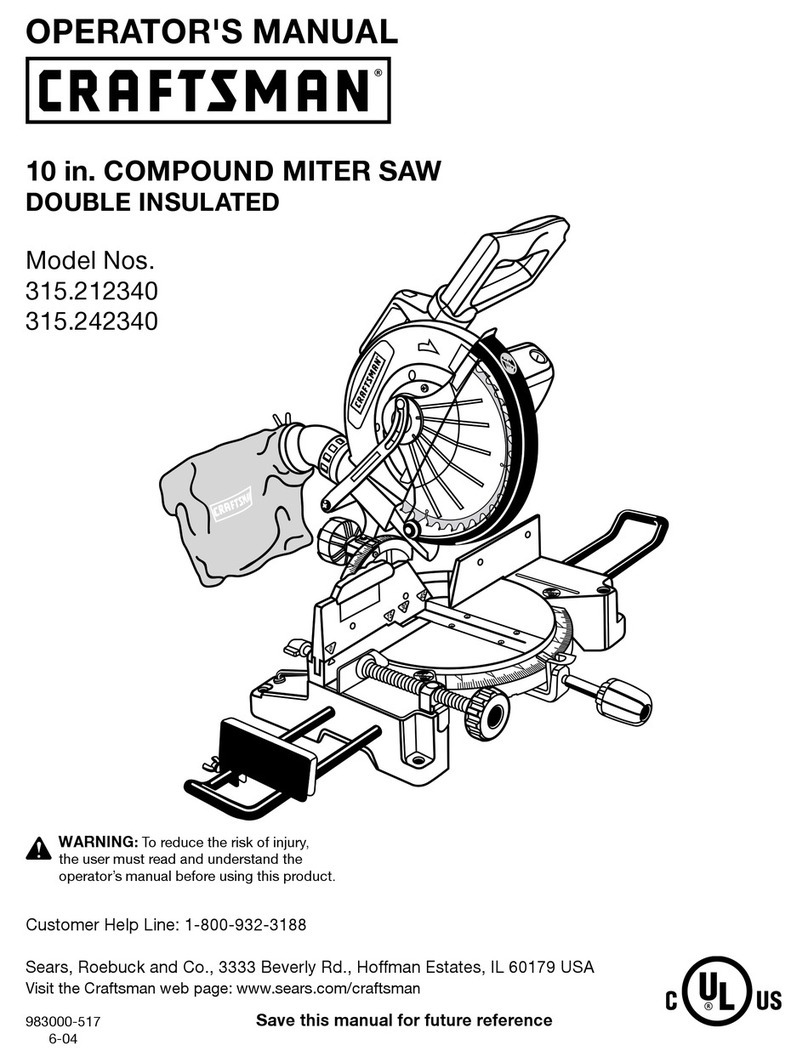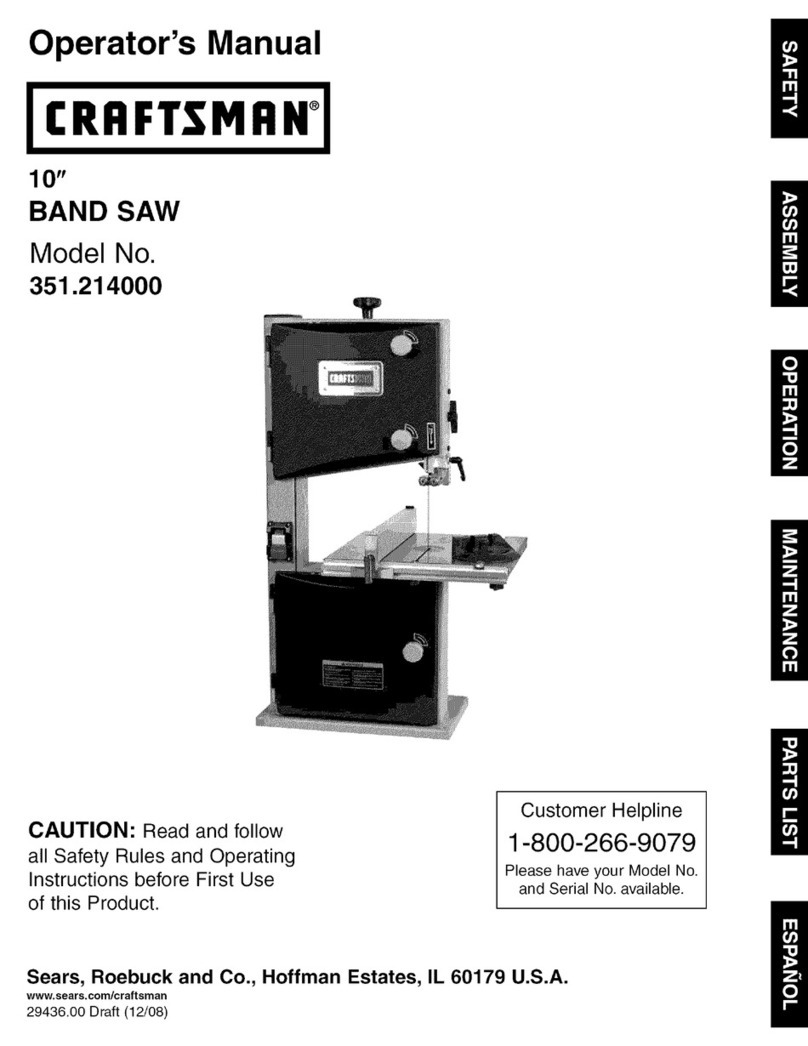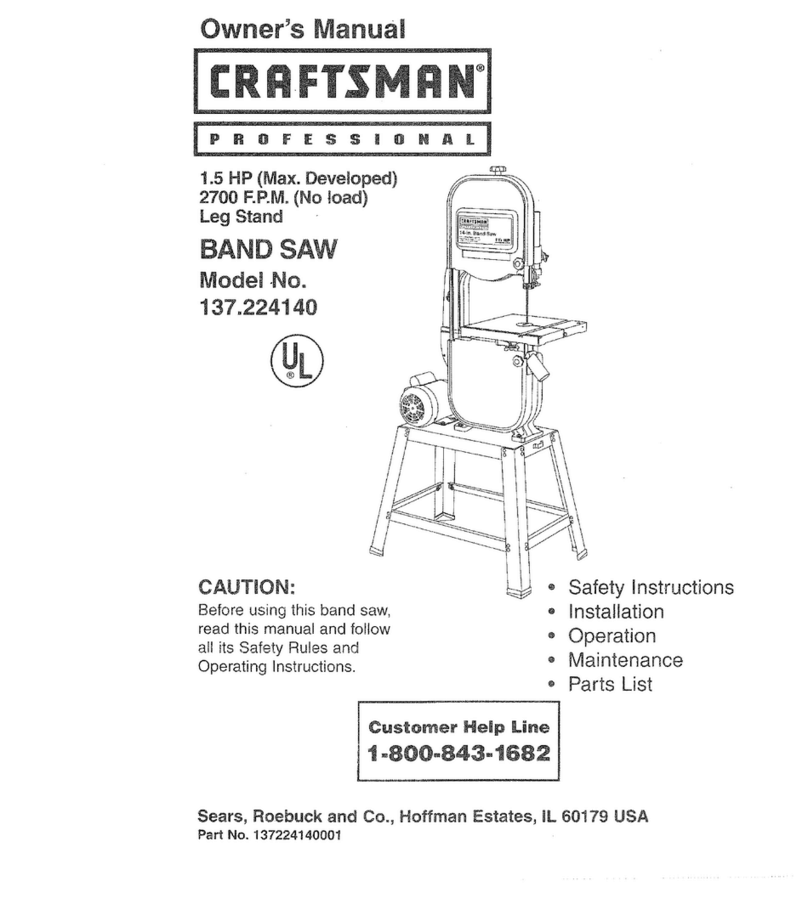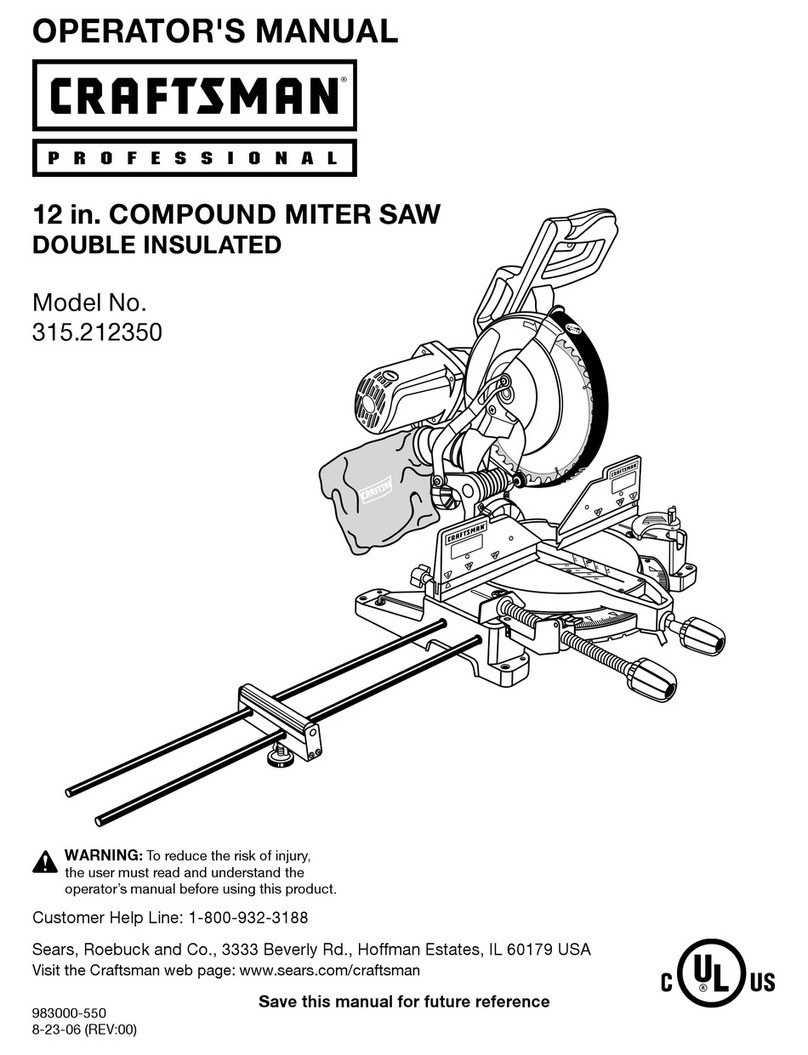while thecuttingtool is rotating.Therotating
tool could cut and throw anything hitting the
bladecausingthe saw to unexpectedlycome
forward.
-- Usetherightguard.Toavoidlosingcontrolofthe
workpiece,hittingthecuttingtool,orbeingstruck
bythrownpieces,neverdoanycuttingunlessthe
properguard(withallitspartsinplace)isinstalled
andadjustedproperly.
-- Toavoidinjuryfromthrownpieces,slips,blade
contact,orjammingoftheworkpiece,makesure
noplayexistsbetweenthecolumnandcolumn
supportorinthecarriageandthatthearm,yoke,
bevellocks/clampsaretight.
--To avoidinjury from thrown objects,slips or
jammingofthebladeduetopinchingoftheblade
byshiftingboards:
(a)Donotleavealongboardunsupportedsothe
springof theboardcausesitto twistor rise
fromthetable.
(b)Checkto besurethatpieceswill notfall off
thetableoncetheyhavebeencut.
(c) Providesupportfortheworkpiece,basedon
its size and the type of operationto be
performed.
(d)Neveruseanotherpersonasasubstitutefora
tableextension,or asanadditionalsupport
foraworkpiecetoassistin feeding,support-
ing,orpullingtheworkpiece.
(e)Nevercutworkpiecesplacedsideto sideor
stackedontopofeachother.Thepiecescan
slideoneachother.
WEARYOUR
--The operationof anypowertool can resultin
foreignobjectsbeingthrownintotheeyes,which
canresultinpermanenteyedamage.Alwayswear
safetygogglescomplyingwithANSIZ87.1(shown
on package).Safetygogglesare availableat
Searsretail catalogstores.Useof gogglesor
glassesnotincompliancewithANSIZ87.1could
resultin severeinjuryfrombreakageof theeye
protection.
-- To avoidinjuryfromuncontrollablereactionor
thrownobjects,neverturnthesaw"ON" before
clearingthetableorworksurfaceofall objects
(tools,scrapsofwood,etc.)excepttheproperly
supportedworkpieceandrelatedfeedorsupport
devicesfortheoperationplanned.
WHENEVER THE SAW IS RUNNING
-- Always keep alert. Do not allow familiarity (gained
from frequent use of your saw) to cause a careless
mistake. Always remember that a careless fraction
of asecond is sufficient to inflict severe, permanent
injury.
If your saw makes an unfamiliar noise or if it
vibrates excessively, stop the operation immedi-
ately. Do not restart until the source has been
located and the problem corrected.
Do not cycle the motor switch "ON" and "OFF"
rapidly, as this might cause the sawblade to
loosen, tn the event this should ever occur, turn
the switch off, allow the sawblade to come to a
complete stop, and remove the switch key. To
avoid damage to the blade and flange, retighten
the arbor nut normally, not excessively.
-- Never perform any operation freehand. Injury can
occur from blade contact or thrown pieces when
the workpiece is torn from the hands. "Freehand"
means feeding the sawblade into a workpiece or
feeding the workpiece into the sawblade or other
cutting tool without using the fence or some other
proper device to prevent the workpiece from
twisting and binding on the cutting tool during the
cutting operation.
-- To avoid accidental blade contact, avoid awkward
hand positions where a sudden slip causes a hand
to move toward the sawblade or other cutting
tool. Do not place fingers or hand on the work-
piece or table that is in the path of the sawblade.
-- To avoid being pulled into the back of the blade
before you can let go or react, never reach in back
of, or around the cutting tool, with either hand to
hold down the workpiece or for any reason.
-- To avoid injury from unexpected starting, never
attempt to free a stalled sawblade without first
turning the saw "OFF" and removing the switch
key. If the sawblade is stalled or jammed, shut the
saw "OFF", remove the switch key, remove the
workpiece, check for looseness in clamps, arm
and carriage, check the sawblade squareness to
the table surface and to the fence, and check for
heel (see page 20). Adjust as indicated.
-- To avoid injury from falling parts or from falling
into the saw, never climb on or near the saw when
its power is "ON". Never leave the saw area when
power is "ON", or before the cutting tool has
come to a complete stop.
-- To avoid unauthorized saw use, remove the switch
key and put the key away before leaving the saw
area.
BEFORE STARTING A RIPPING TYPE CUT
To avoid injury from being struck by a thrown
workpiece, position the saw so neither you, a
helper, or a casual observer is forced to stand in
line with the sawblade or workpiece.
Whenever possible, use the "in-rip" position. (See
page 31.) This provides maximum clearance for
feeding by hand, push stick, or push block as
appropriate.
To avoid thrown workpieces or being pulled into
the saw before you can react, push the workpiece
